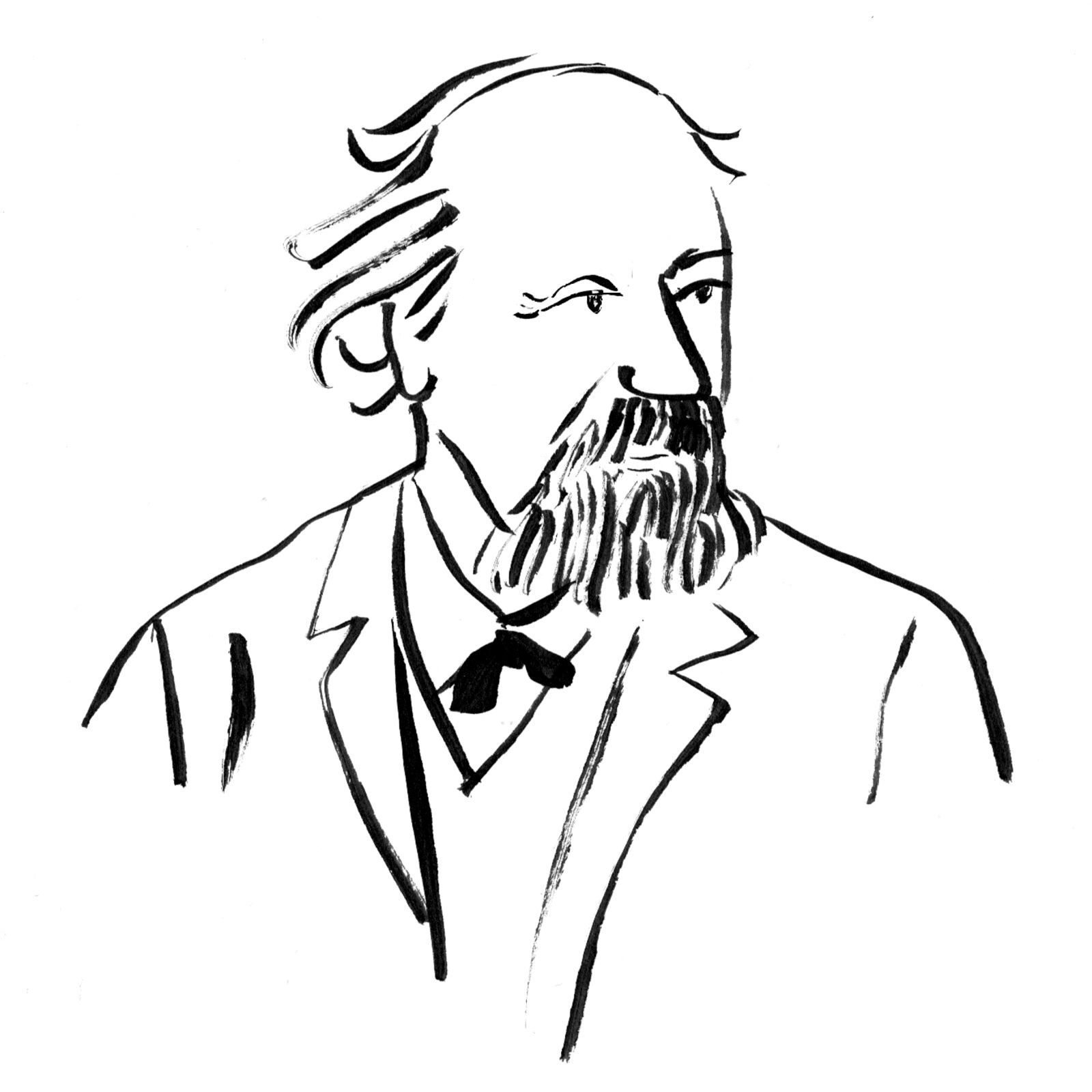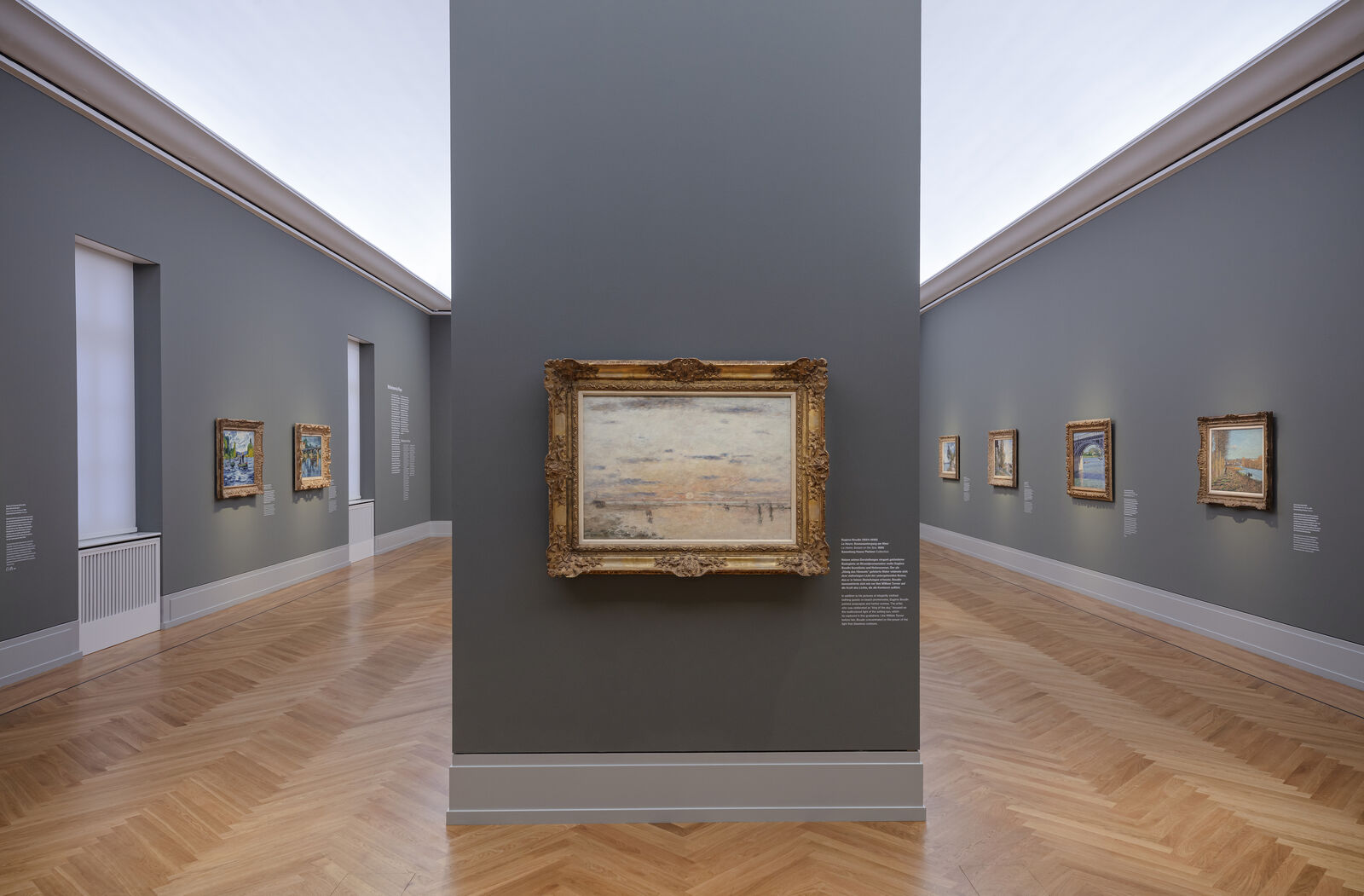
Laura Junger
Eugène Boudin
Born 1824 in Honfleur
Died 1898 in Deauville
Boudin is considered a pioneer of plein air painting, which he also introduced to Monet. In his seascapes he explored the interplay of water, clouds, and light.

David von Becker
Boudin grew up in the port city of Honfleur. At the age of 20, he opened an art supply shop in nearby Le Havre, where he also exhibited his own works. There the painter Jean-François Millet discovered Boudin’s early pastel sketches in 1845 and encouraged him to pursue a career as an artist.
Boudin attended the drawing school in Le Havre before going to Paris in 1851. After three years he returned to Honfleur where he met Monet in 1858 and painted with him on the Normandy coast. In 1874, Boudin participated in the first Impressionist exhibition. His works from the 1880s bespeak a close relationship with his former pupil Monet, who helped organize a posthumous retrospective for Boudin in Paris in 1899.
Boudin in the collection
Eugène Boudin is represented with six works in the Hasso Plattner Collection, on view in the Museum Barberini as a permanent loan from the Hasso Plattner Foundation. With over 110 paintings of French Impressionism and Post-Impressionism, including masterpieces by Claude Monet, Pierre-Auguste Renoir, Berthe Morisot, Gustave Caillebotte, and Paul Signac, the museum in Potsdam is one of the most important centers of Impressionist landscape painting in the world.









